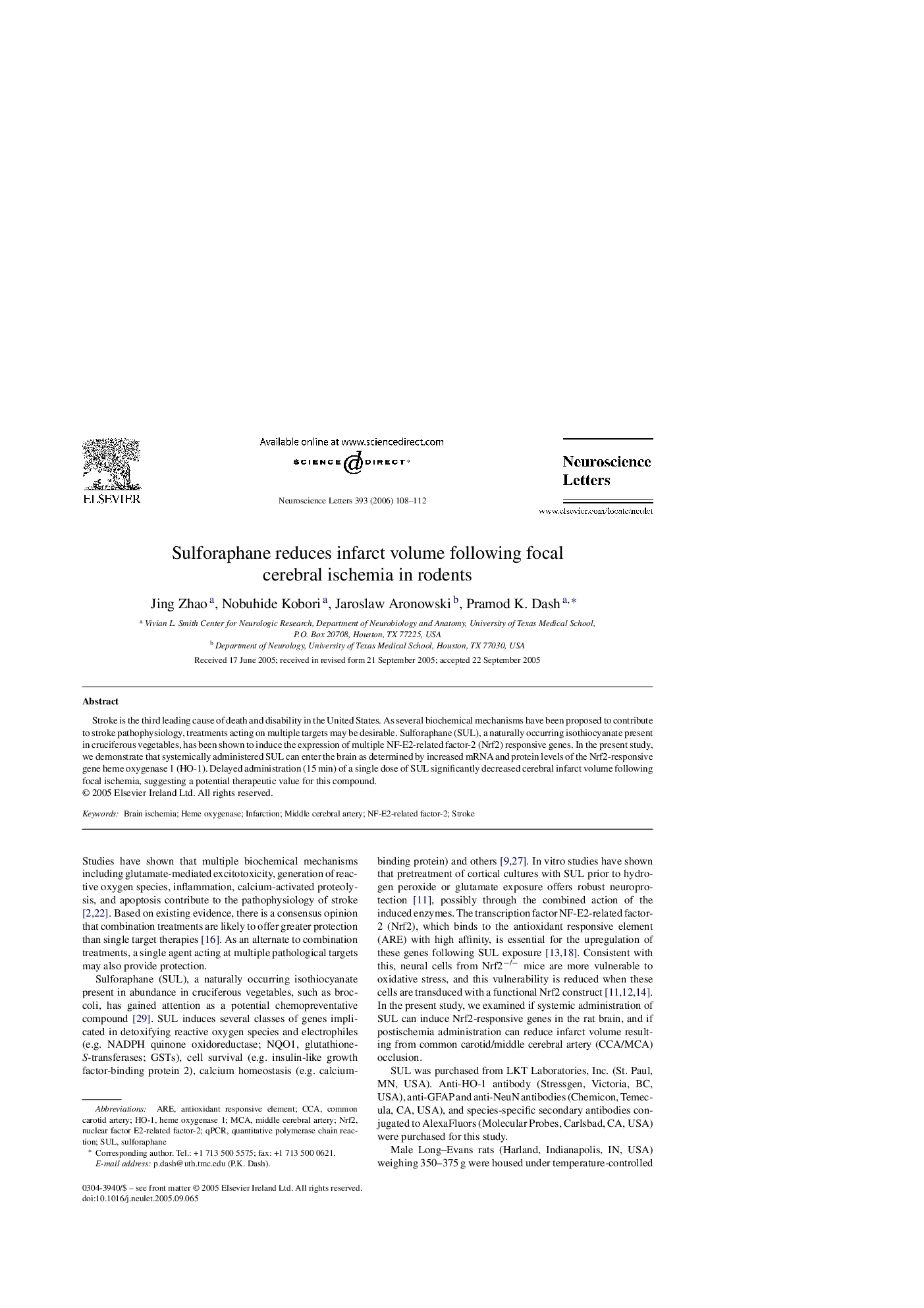| Article ID | Journal | Published Year | Pages | File Type |
|---|---|---|---|---|
| 4351120 | Neuroscience Letters | 2006 | 5 Pages |
Stroke is the third leading cause of death and disability in the United States. As several biochemical mechanisms have been proposed to contribute to stroke pathophysiology, treatments acting on multiple targets may be desirable. Sulforaphane (SUL), a naturally occurring isothiocyanate present in cruciferous vegetables, has been shown to induce the expression of multiple NF-E2-related factor-2 (Nrf2) responsive genes. In the present study, we demonstrate that systemically administered SUL can enter the brain as determined by increased mRNA and protein levels of the Nrf2-responsive gene heme oxygenase 1 (HO-1). Delayed administration (15 min) of a single dose of SUL significantly decreased cerebral infarct volume following focal ischemia, suggesting a potential therapeutic value for this compound.
